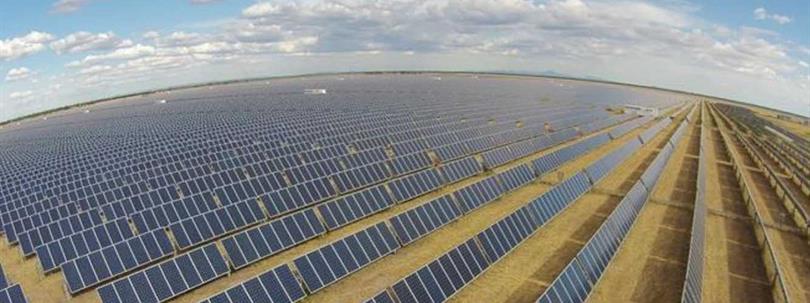The New South Wales Government has allocated $10 million for a two-stage grant funding scheme aimed at keeping end-of-life solar systems out of landfill, and recognising that investment in recycling is essential to help the state meet its commitment of net zero CO2 emissions by 2050.
“While current amounts of waste are low, now is the time to invest in developing systems for collecting and recycling these valuable resources like rare metals,” said Kathy Giunta, the NSW Environment Protection Authority’s (EPA) Director of Circular Economy, when she launched the program late last week.
The EPA forecasts that by 2025 NSW will generate between 3,000 and 10,000 tonnes of waste solar panels and battery storage systems each year; by 2035, the truckloads of glass, silicon and twisted metals headed for the tip will increase to between 40,000 and 71,000 tonnes per annum.
A sticky problem
The challenges of recycling panels include the difficulty of separating components binding the module sandwich together, such as ethyl vinyl acetate (EVA). The use of chemical solvents significantly increases the toxic load of processing; and the challenge of collecting and transporting end-of life materials to suitably equipped, centralised recycling depots.
Adelaide-based Reclaim PV has been developing and trialling its processes and collection systems for some years, in collaboration and with the support of manufacturers such as Canadian Solar, Q Cells and Suntech. It most recently arrived at a process which involves heating the panels in a furnace in stages to enable separation of components.
At the University of New South Wales, research published in May last year by a group led by CheeMun Chong, Professor at the School of Photovoltaic and Renewable Energy Engineering, examined the economic barriers, technologies and opportunities for profitably recycling end-of-life silicon photovoltaic modules.
Toward a clean, green, circular energy machine
The researchers focused on the potential reuse of significant volumes of glass, aluminium, silicon, silver, copper; and on keeping toxic components such as lead, cadmium and telluride, out of landfill, thereby eliminating the risk of contaminating soils and groundwater.
Via its Circular Solar Trials, the new NSW EPA is calling for expressions of interest outlining proposed recycling projects “that will test the commercial and logistical feasibility of collecting and aggregating solar panel and battery systems for recycling and reuse; linking these resources with end markets to show end-to-end outcomes”.
The initial $2 million round, which closes on Thursday 17 September at 4pm, is to identify and establish “collaborative ‘whole-of-supply-chain projects’ that trial managing end-of-life solar panels and or battery systems within a circular economy framework,” says the EPA.
Applicants shortlisted after Stage 1 will be invited to apply for Stage 2 of the trials which will open in October this year with $8 million in available grants. Applicants will have four weeks from notification of having succeeded in Stage 1 to develop their project plan, formalise networks of participants and complete a detailed budget.
The trial process is expected to “see NSW well placed to manage waste solar systems over the coming years, and will stimulate much-needed job creation in the solar power and recycling sectors,” said Giunta.
Ongoing funds to build an effective industry
Further funding is also on the cards, with priorities for future rounds likely to include: scaling up of promising projects; developing recycling/reuse infrastructure; testing collection models; ongoing research; and development of markets for recycled materials.
Last year Chong told pv magazine, “Putting costs aside,” the materials recovered from the global trash and treasure of the 80 million tonnes of end-of-life solar panels forecast to be generated globally by 2050 … “would translate to two billion new solar panels”.
In addition to the actual physical and logistical work of collecting and recycling solar-system waste, policy has a role to play in enlisting solar manufacturers to consider end-to-end stewardship of solar infrastructure.
Some countries require manufacturers to pay a deposit on each solar panel sold, with the intention of setting aside funds for future recycling. The structuring of such imposts can encourage manufacturers of solar systems to consider how they design and make panels in the future to enable less costly and destructive separation of materials at end of life, and how they can incorporate second-life materials into production lines.
The NSW EPA is holding an online information session about the Circular Solar Trials grant program on Wednesday this week (26 August) at 11.30am. Register here. And further information, along with application forms are available via the EPA website.
This content is protected by copyright and may not be reused. If you want to cooperate with us and would like to reuse some of our content, please contact: editors@pv-magazine.com.









1 comment
By submitting this form you agree to pv magazine using your data for the purposes of publishing your comment.
Your personal data will only be disclosed or otherwise transmitted to third parties for the purposes of spam filtering or if this is necessary for technical maintenance of the website. Any other transfer to third parties will not take place unless this is justified on the basis of applicable data protection regulations or if pv magazine is legally obliged to do so.
You may revoke this consent at any time with effect for the future, in which case your personal data will be deleted immediately. Otherwise, your data will be deleted if pv magazine has processed your request or the purpose of data storage is fulfilled.
Further information on data privacy can be found in our Data Protection Policy.